Have you ever walked down a street and been drawn to certain houses, admiring their character and how they were constructed? Perhaps you’re buying or building a home and are overwhelmed with choices. Understanding the different home styles is the first pleasure towards choosing a property that best represents your way of life and character. It’s not merely a matter of putting a roof over your head, but of choosing a home that has a story to tell and will enrich your way of life.
From the ageless beauty of the traditional styles to the uncompromising lines of contemporary design, each type of different home style has its own personality and heritage. As someone who has spent hundreds of hours touring many different properties, I can assure you that the appropriate different home style can be a major factor in making you feel more at home. It establishes the mood, the flow, and even the type of furniture and decor that most naturally fits. Take an intriguing journey around the world of different home styles, learning their unique features, interior design, and exterior beauty.
Table of Contents
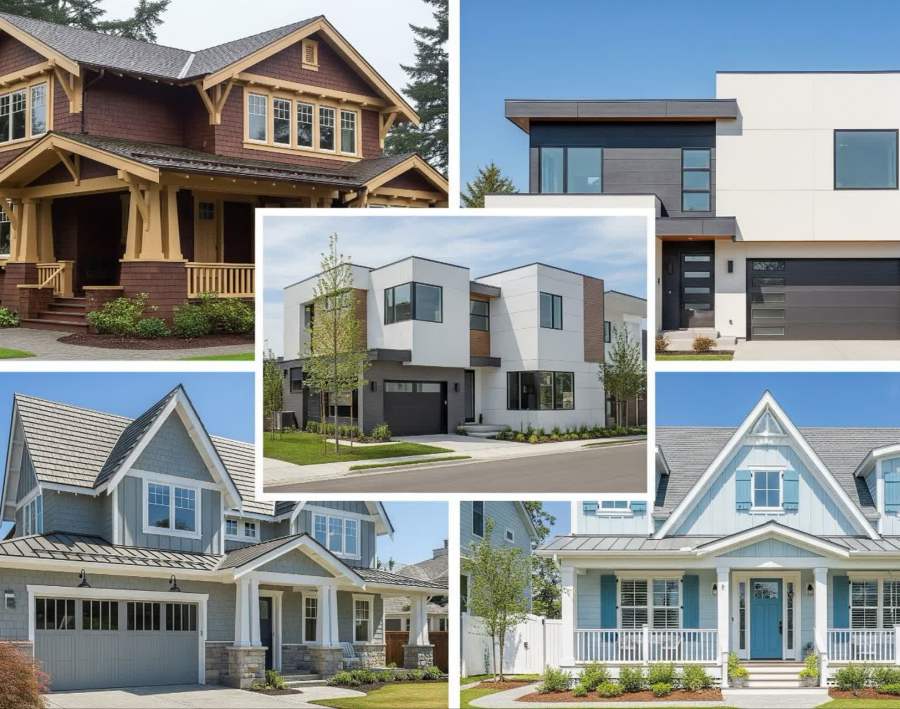
Why It Matters to Know Different Home Styles
It’s not only about appearance, though, since information on all the various types of houses can be really useful. For homebuyers, it assists them in limiting search criteria and more effectively inform real estate agents or interior designers of what they need. For interior design enthusiasts, it gives them the basis on which they may consistently make decorating decisions. For all residents of a specific type of home, it teaches them about its history and architectural integrity, which impacts decisions about renovations.
Knowing different home styles also allows you to:
- Appreciate architectural heritage: Most different home styles were formed in specific time periods or influences of cultures. Knowing the origins of these can make you more attached to a home.
- Design intelligent decisions: Knowledge of the house’s intrinsic style helps in making appropriate interior finishes and furniture choices. This is crucial if a general appearance is to be attained.
- Improve curb appeal and value: Coupling renovations with the house’s original style can contribute to enhancing its beauty and resale value. A preserved house that is uniform in its style sells at a fair price.
Discovering Various Home Styles: Exterior & Interior Distinctions
Let’s go through some of the most significant different home styles you will find, outlining their distinguishing features exterior and interior.
1. Traditional Home Styles: Ageless Sophistication and Classic Charm
To the typical individual, what is considered “traditional ‘houses'” invokes a typical type of house. Such houses borrow elements of older European and American architecture styles, mainly involving symmetry, classical proportions, and durable construction. They tend to use a language of tradition and familiarity, a characteristic of different home styles that become ageless.
Georgian Home Style: Symmetrical Grandeur
The Georgian home style is among the best representations of classic architecture, in broad use from the early 18th century to the late 19th century, particularly in English colonies. It’s the gold standard of various different home styles.
Features on the outside:
- Symmetry: Extremely symmetrical fronts with equally balanced windows and typically a front door in the center.
- Brick or Stone: Usually built of red brick or stone.
- Windows: Double-hung, multi-pane windows, occasionally with ornate crown moldings at the top.
- Roof: Gabled or hip roof, possibly with dormer windows.
- Entryway: Front door emphasized, often with side-lights and a transom window.
Interior Features:
- Formal Layouts: In most cases, a central hallway with rooms arranged symmetrically on either side.
- Molding & Trim: Toweringly heavy crown molding, wainscoting, and elaborate fireplace surrounds.
- High Ceilings: Usually have high ceiling heights, especially on the first floor.
- Hardwood Floors: Comprise mainly dark hardwood flooring.
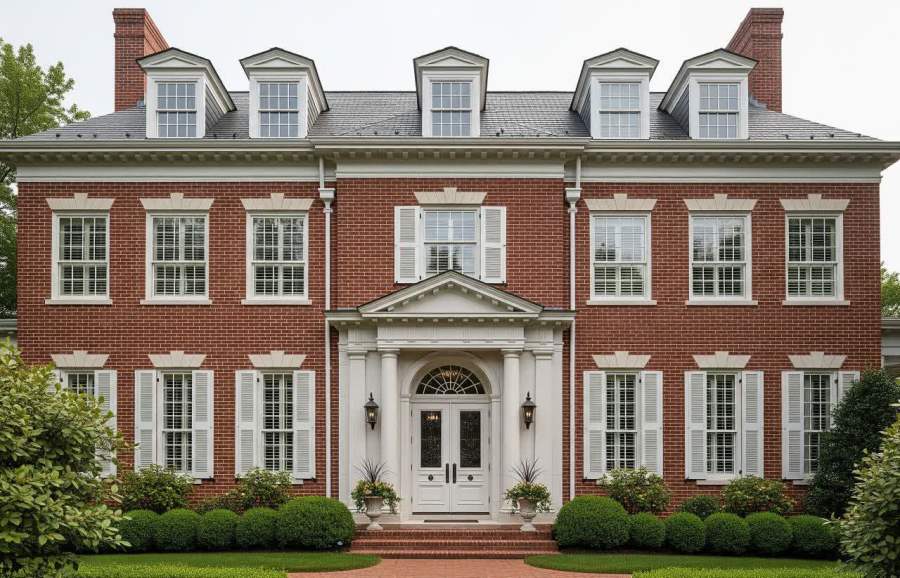
Victorian Style Home: Ornate and Eclectic Splendor
Victorian houses, which flourished during the reign of Queen Victoria (1837-1901), are noted for their romantic, sometimes ostentatious, and eclecticism. They stand in stark contrast to the austere symmetry of Georgian houses, exposing yet another one of the different home styles.
External Features:
- Asymmetry: Unusual shapes and asymmetrical fronts are typical.
- Ornate Trim: Lacy “gingerbread” trim, spindles, and fish-scale shingles.
- Turrets & Towers: Standard additions that create dramatic silhouettes.
- Varied Materials: Use of various textures and colors on the exterior, e.g., wood siding, brick, and stone.
- Porches: Large, often wrap-around porches with intricate railings.
Interior Features:
- Rich Detail: Intricate woodwork, complex fireplaces, and ornate wall treatments like wallpaper.
- Defined Rooms: Often a series of distinct, defined rooms rather than open-concept spaces.
- Stained Glass: Lavish stained glass windows are everywhere.
- Pattern & Color: Enjoy lavish pattern, opulent color, and several textiles.
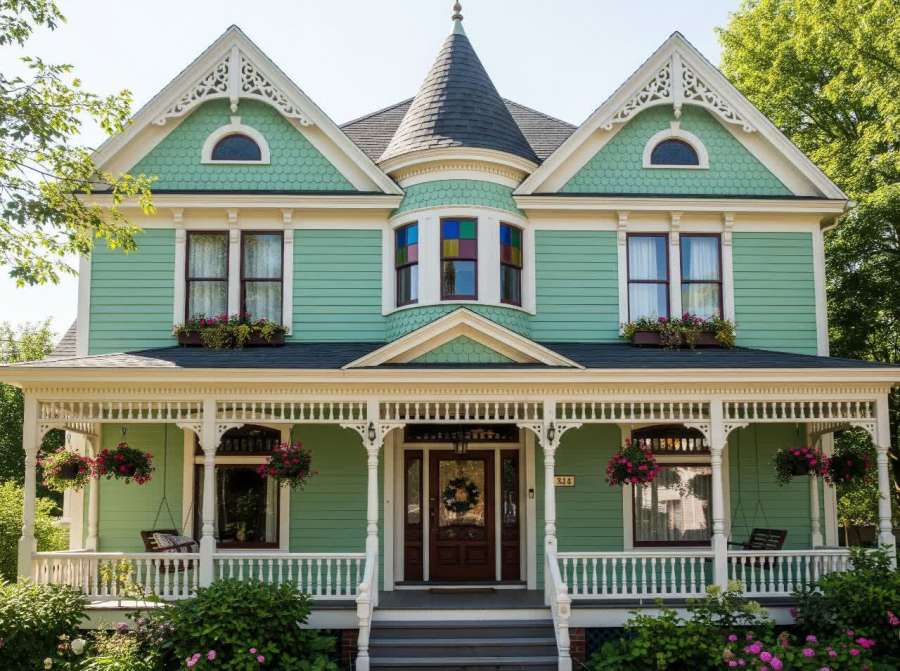
Tuscan Home Style: Rustic European Charm
The Tuscan home style brings to mind the rustic beauty and warmth of the Italian countryside, with an emphasis on natural materials and a warm, earthy color palette. It’s a true distinctive option among different home styles.
Exterior Features:
- Stucco & Stone: Exterior walls typically stucco finished, typically in warm earth tones, with natural stone accents.
- Terra Cotta Roof Tiles: Typical red or orange-colored barrel tiles found on low-pitched roofs.
- Arches: Heavy use of graceful archways for windows, doors, and loggias.
- Wrought Iron: Elaborate wrought iron details on balconies, railings, and lighting.
Interior Features:
- Natural Materials: Stone flooring, exposed wooden beams, and embossed plaster walls.
- Warm Colors: A very warm color palette centered around terracotta, ochre, olive green, and warm brown.
- Big Kitchens: Usually have large, inviting kitchens with center islands, perfect for gathering.
- Hand Painted Elements: Can have hand-painted murals or decoration.
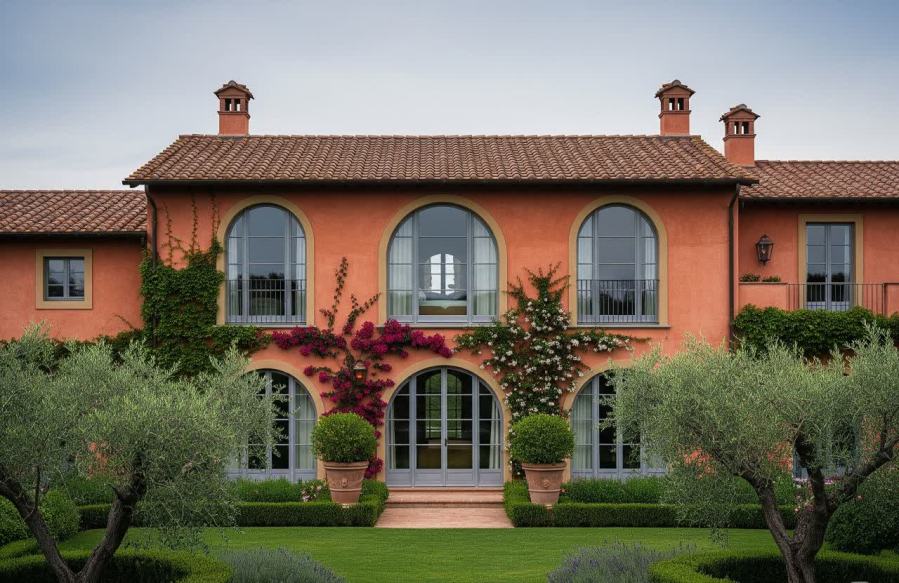
2. Modern Home Styles: Clean Lines and Open Spaces
Modern different home styles are all about simplicity, functionality, and balancing with nature. They are a culmination of architectural styles of the 20th century, reacting to the decoration of the past. They are among the most sought-after different home styles today (Redfin survey).
Mid-Century Modern: Timeless Design and Harmony with Nature
Developed in response to the requirements of the mid-1940s to the 1960s, Mid-Century Modern homes are famous for their innovative designs and emphasis on functionality and harmonious indoor-outdoor living. A number five most desired home style, it continues to be a force in contemporary design and a fixture in many different home styles discussions.
Outdoor Features:
- Flat or Low-Sloped Roofs: A feature of the style, creating a streamlined profile.
- Big Windows: Extensive application of clerestory windows, sliding glass doors, and floor-to-ceiling windows to allow natural light and views.
- Open Floor Plans: Rooms that open directly into one another, both indoors and outdoors.
- Blending with Landscape: Designed to blend with the surrounding natural landscape, often incorporating patios and courtyards.
- Minimal Decoration: Clean lines and lack of trim.
Interior Features:
- Open Layouts: Space sense created by minimal walls.
- Natural Materials: Wood, stone, and glass prevail.
- Functional Furniture: Low-set furniture with clean lines and natural shapes.
- Built-in Storage: Attractive built-in storage space.
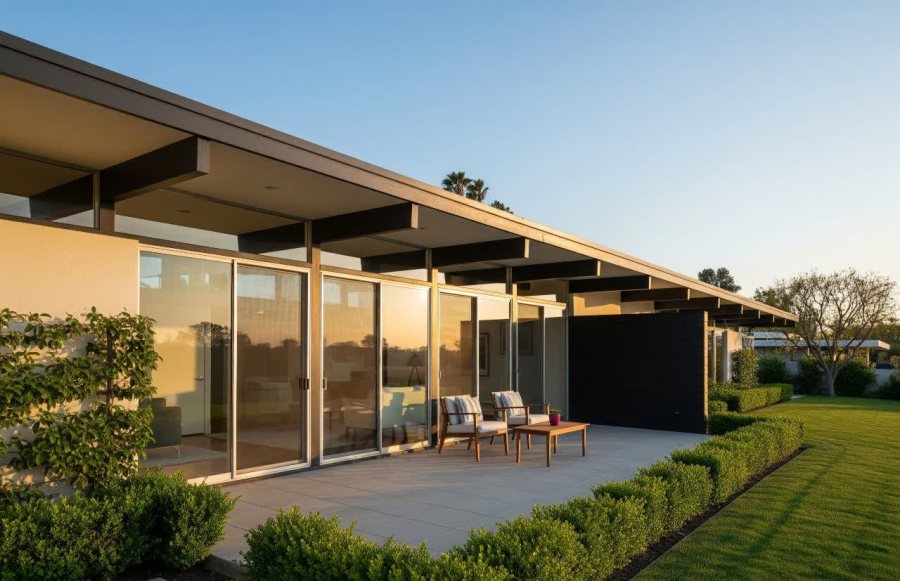
Minimalist Interior Design: Less is More
Not so much an architecture style in and of itself, minimalist interior design typically follows modern and contemporary homes, with simplicity, function, and open living being the focus. It’s more about taking away the extraneous to highlight what’s essential, a different approach among different home styles for interior design. As they note at House Beautiful, every choice is intentional in this style.
Interior Features:
- Uncluttered Lines: Furniture and accessories display clean, geometric forms.
- Subdued Color Schemes: The prevalent are white, grey, black, and natural wood tones.
- Airy Spaces: Sense of airiness and freedom of movement.
- Few Accessories: Every item serves a purpose or makes a considerate visual contribution.
- Focus on Texture: Visual interest is created through varied texture rather than pattern and bold color.
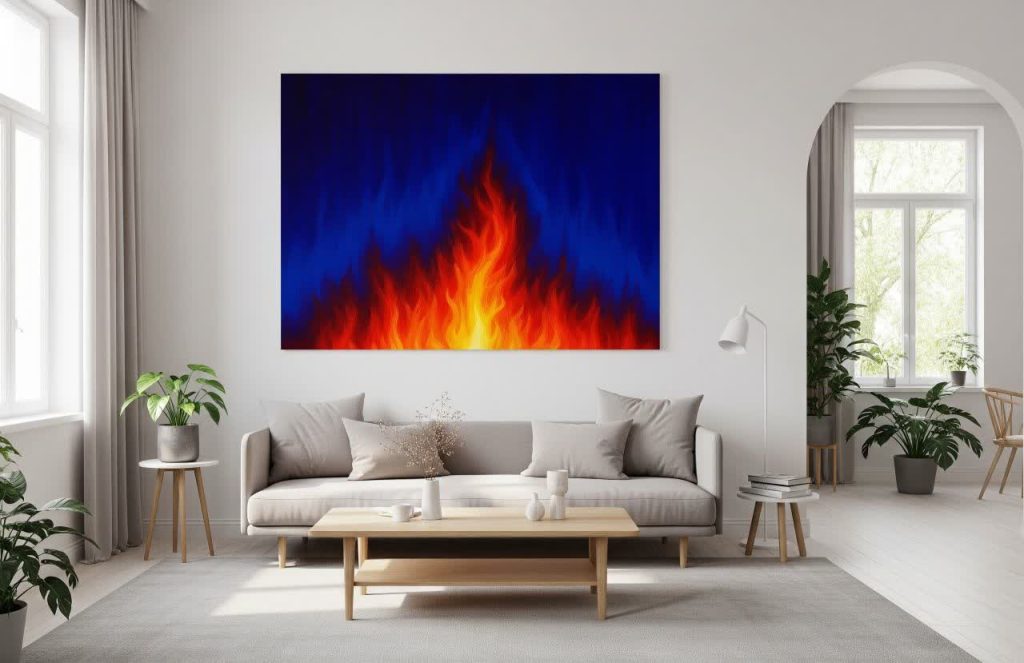
3. Regional & Culturally Driven Home Styles: A Sense of Place
There are some distinctive different home styles that have strong associations with geographic places or cultural heritage, evolving to fit local climates, materials, and social custom. The styles create a strong sense of association with where they originated.
Spanish Home Style: Mediterranean Allure
Spanish home style architecture, which is very trendy in states like California and Florida, borrows inspiration from Spanish Colonial and Mediterranean architecture, and creates a warm and inviting appearance. It is a very recognizable example of some of the different home styles.
Exterior Features:
- Stucco Walls: White or light stucco walls.
- Red Tile Roofs: Low-sloping red clay tile roofs.
- Arched Openings: Arched windows and doors, and sometimes arcades.
- Courtyards: Often feature interior courtyards that are private or enclosed patios.
- Wrought Iron: Decorative ironwork on gates, window grilles, and balconies.
Interior Features:
- Cool Materials: Plastered walls, terracotta tiles, and exposed wooden beams cool interiors.
- Rich Colors: Blues, yellows, and rich reds are generally used as accents to the neutral background.
- Hand-Carved Wood: Architectural decoration and furniture generally consist of detailed wood carving.
- Central Courtyard: Interiors generally open up to a central courtyard, combining indoor and outdoor living.
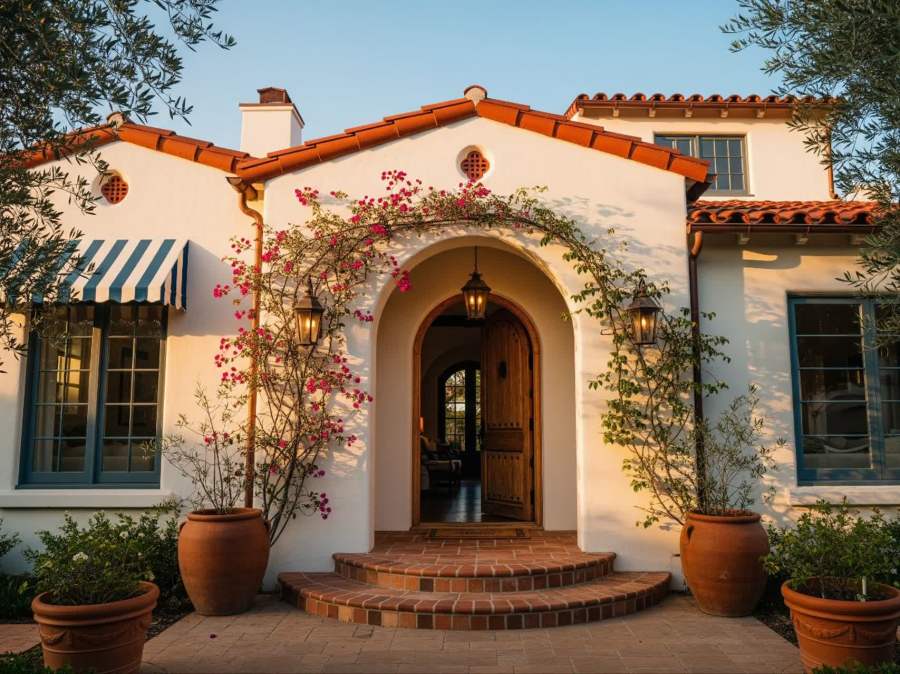
Japanese Home Style: Harmony with Nature and Peacefulness
Japanese home style is a home style that is all about harmony with nature, simplicity, and an appreciation of craftsmanship. It’s all about peacefulness and infusing peace and balance, which makes it a special addition to other different home styles.
Exterior Features:
- Natural Materials: Abundant use of wood (normally dark-stained), bamboo, and natural stone.
- Low Profile: Generally have low-slung, horizontal lines and slightly pitched roofs.
- Integration with Gardens: Designed to merge discreetly with water features and landscaped gardens.
- Sliding Doors (Shoji/Fusuma): Used extensively for exterior and interior walls to provide flexibility and outdoor access.
Interior Features:
- Open Layouts: Adaptive, open areas which may be rearranged by the use of sliding screens.
- Minimalism: Simple, plain rooms with a focus on the bare essentials.
- Natural Light: Abundant natural light coming through screens or large windows.
- Tatami Mats: Traditional woven straw mats used heavily for flooring.
- Shoji Screens: Paper screens filtering light and yet not closing out entirely.
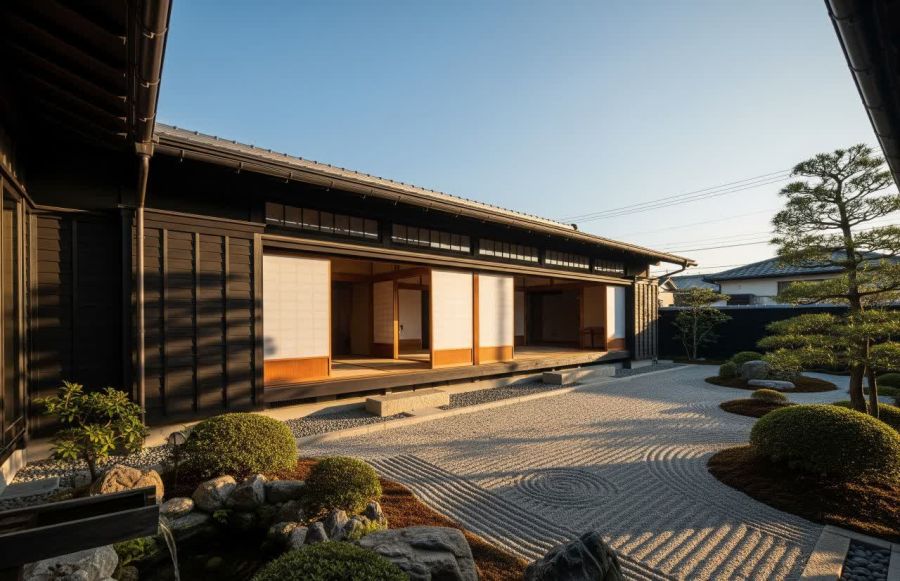
Adobe Home Style: Earthy Warmth and Resilience
Adobe home style has strong roots in the American Southwest and embodies the construction traditions of the region’s native inhabitants. The Adobe houses are known for their terracotta-like quality and natural thermal mass, making it a distinct option among other different home styles.
Outside Details:
- Heavy, Earthy Walls: Constructed using sun-dried mud bricks, which give a distinct organic, sculptural look.
- Rounded Corners: Smooth lines and edges, as opposed to sharp corners.
- Flat Roofs: Generally flat roofs with parapet walls hiding the roofline.
- Small, Deep-Set Windows: Constructed to provide cool inside space where it is hot.
- Vigas: Wooden vigas (beams) exposed in many places often project outside of outside walls.
Interior Features:
- Plaster Walls: Interior walls are often painted a smooth, natural plaster finish.
- Kiva Fireplaces: Traditional corner fireplaces in a rounded, beehive configuration.
- Exposed Beams: Vigas and latillas applied on the outside for ceiling beams provide a rural feeling.
- Cool Interiors: Insulating walls of thickness adobe provides, keeping summer interiors cool and winter interiors warm.
- Earthy Palette: Subdued, earthy tones the desert climate requires.
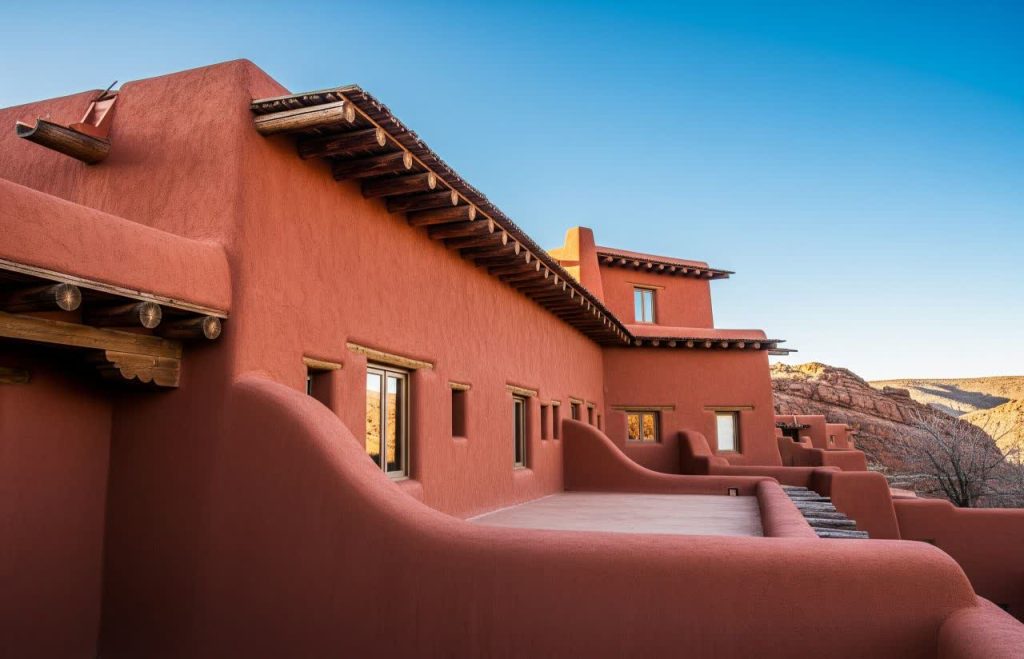
4. New & Modern Home Trends: The Design Revolution
New house styles are always evolving with the times, incorporating prevailing design principles, technological advancements, and sociological shifts. They prefer to adopt from modernism but break free from its strict tenets so there is greater experimentation, creating ever more variant house styles. The current landscape of different home styles has both innovation and revivals of tradition.
Modern Farmhouse: Rustic Meets Sophisticated
The Modern Farmhouse became popular, blending country cabin cozy with clean lines and contemporary comforts of the modern design. It’s an eye candy of how different home styles may be mixed but still work. The modern farmhouse is a homeowner favorite in 2025, according to House Plan Central.
Outside Features:
- Clean Lines: Smooth curves versus the classic farmhouses.
- Board-and-Batten Siding: Often vertical siding, occasionally horizontal lap siding.
- Large Windows: Multiple windows, occasionally black-framed, to allow lots of natural lighting.
- Gable Roofs: Gabled roofs are visible.
- Porches: Large front or wrap-around porches, typically with open wood beams.
Interior Features:
- Open Floor Plan: Roomy and open.
- Color Scheme: Predominantly white, grey, and natural wood tones, with black or subdued color accents.
- Reclaimed Wood Elements: Open beams, barn doors, and shiplap walls.
- Industrial Elements: Includes industrial elements like metal lighting or hardware.
- Cozy & Relaxed: Furniture is soft and warm, which implies a comfortable atmosphere.
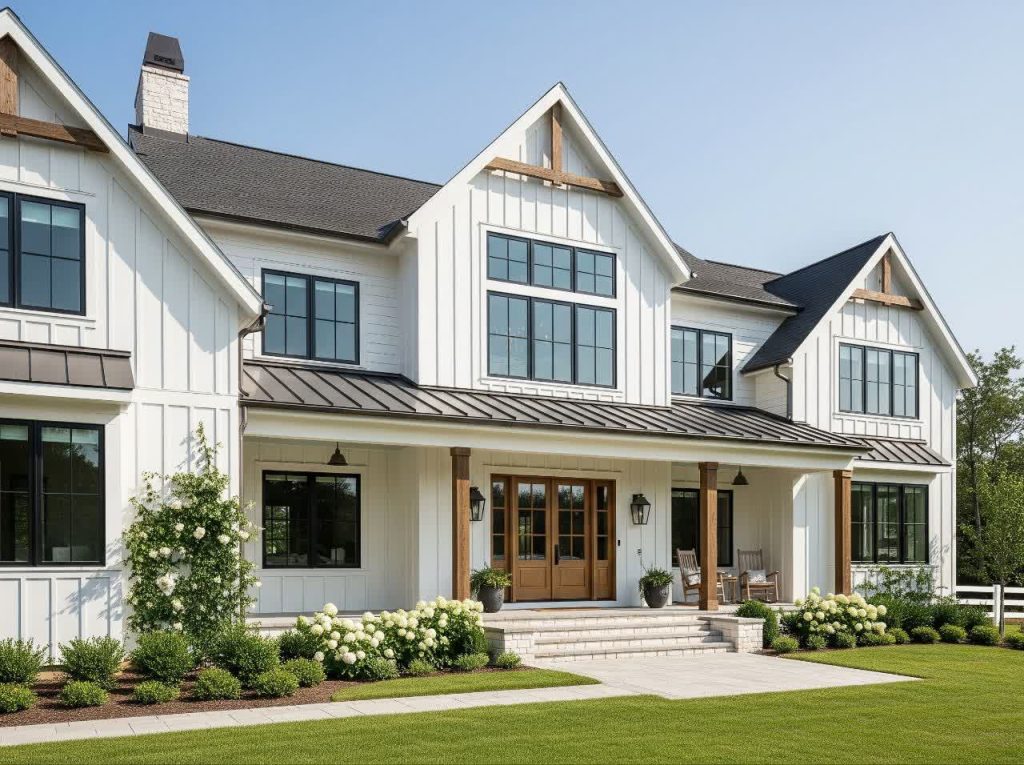
Brutalist Interior Design: Raw and Unapologetic
While contentious, Brutalist interior design is an architectural movement that has been adopted for interior design. It’s a work of the Brutalist movement of architecture and is marked by the utilization of raw, bare materials, but concrete in particular. It’s characterized by being the opposite of just about every other alternative house style, unlike other different home styles.
Interior Details:
- Exposed Concrete: Concrete walls, floors, and ceilings are the center point.
- Raw Materials: Unclad surfaces like exposed brick, steel, and wood.
- Monochromatic Palette: Generally grey, black, and white with the textures prevailing.
- Heavy Forms: Monumental, dense, and often sculptural forms.
- Minimal Decoration: Keeps minimal decoration so that the inherent qualities of the material are the sole articulate features in the place of applied ornamentation.
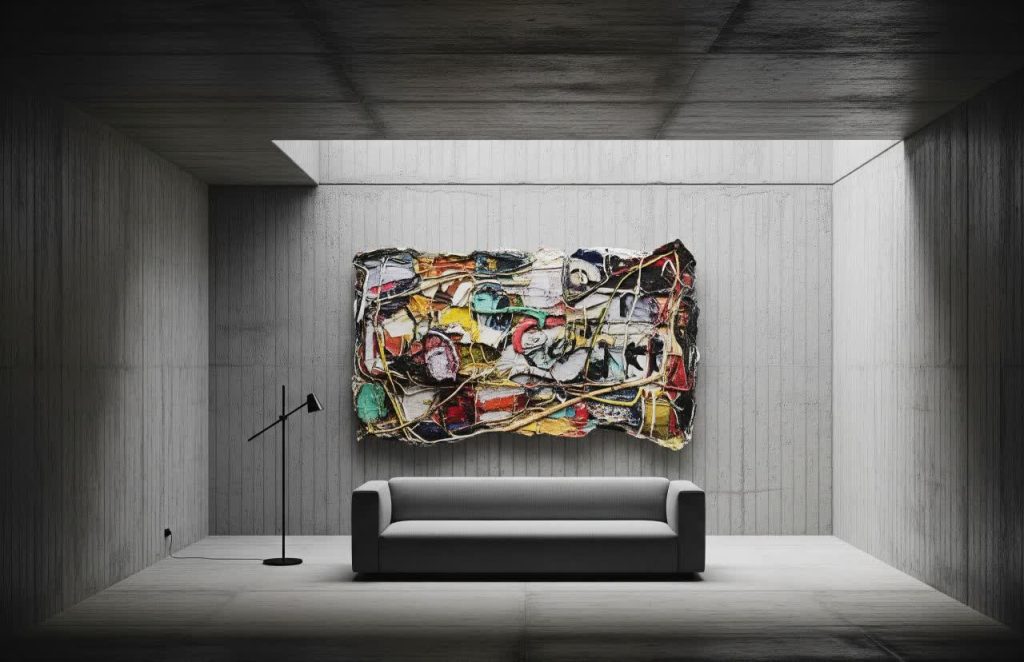
Selecting Your Ideal Home Style
There are so many various different home styles to choose from, then how do you select the most ideal one for you? It is easy to get overwhelmed, but taking your time can make all the difference.
- Observe Your Lifestyle: Are you a person who flourishes in open, communal spaces, or do you like being secluded and quiet in your rooms? Are you a low-maintenance individual or someone who loves delicate details? Your daily routine must inform your choice of different home styles.
- Remember the Climate: Some different home styles are inherently more suitable for a specific climate (e.g., adobe in extremely hot, dry climates, as discussed earlier). Think about how the weather in your area will respond to your home.
- Keep in Mind the Long Haul: Trends come and go, but a well-chosen other different home styles should look ageless to you. Think about resale value and how easily the style adapts to future needs.
- View Open Houses & Tours: Step into several different home styles to observe how they feel. Photographs only reveal part of the story; stepping into a space releases its personality.
- Look for Inspiration: Compile images of homes, interiors, and exteriors that appeal to you. Notice recurring elements – these are often clues to your underlying preferences in different home styles.
- Obtain a Professional Opinion: Architects, real estate agents, or interior designers can give you expert opinions and guide you towards some different home styles that best fit your vision and budget. They can provide insights you may never have thought of.
The beauty of many different home styles is that they come in every shape and size. There’s something for everyone, from being awed by the aged refinement of a Victorian, the peaceful lack of style of an Emmentaler Japanese home, or the strength of a determination-built Adobe. Your home is your canvas, and being familiar with these styles lets you paint the perfect picture of your home.
Of these many different home styles, which resonated with you the most? Tell us in the comments! And for more dive-ins into interior aesthetics, be sure to read our other guides, such as the Maximalist Interior Design Guide for a dramatic look, or explore the history of the Georgian Home Style . We love hearing your take and learning more with you about different home styles!
Summary of Key Points
- Different Home Styles Defined: Architectural, and therefore exterior and interior, styles are characterized by history, culture, climate, and resources. They offer unique lifestyles.
- Timeless Styles: Employ accent symmetry, classical proportion, and historic detailing (e.g., Georgian, Victorian, Tuscan). They are durable different home styles.
- Modern Styles: Value simplicity, functionality, open floor plans, and natural interface (e.g., Mid-Century Modern, Minimalism). These styles are emerging into new house styles.
- Regional/Cultural Styles: Located in specific geographic locations or cultures (e.g., Spanish, Japanese, Adobe). These unique house styles reflect local heritage and climate accommodation.
- New/Emerging Styles: They represent the newest trends and innovation (e.g., Modern Farmhouse, Brutalist). These are the newest alternative house styles à la mode.
- Making Your Choice: Life, climate, long-term appeal, and the experts. Details on different home styles guide well-informed decisions for your ideal house, and guides you through the boundless expanse of design possibilities.
FAQ: Getting Familiar with Different Home Styles
Q1: What are the most sought-after house styles?
The most sought-after different home styles can be region and what’s current-dependent. Currently, some of the most popular house styles, according to 2025 surveys, include:
- Modern Farmhouse: Country with contemporary elements.
- Mid-Century Modern: Clean lines, open floor spaces, and large windows.
- Ranch: Open floor plans in one-story houses, prized for their convenience.
- Colonial/Traditional: Long-standing popularity with age-old symmetry and heritage.
- Modern: A grab-all term for modern designs, generally having new geometries and green features.
Q2: What are the different styles of home decorating?
Home decorating styles are interior designs that complement or contrast a home’s architectural style. Architectural styles dictate the building’s shell, while decorating styles dictate the interior ambiance and atmosphere. Popular decorating styles are:
- Minimalist: Focus on simplicity, clean lines, and little clutter.
- Bohemian: Mix of patterns, textures, and global influences in a relaxed way.
- Industrial: Raw, unfinished textures like exposed brick, metal, and concrete.
- Farmhouse: Rustic, warm, and frequently includes vintage or repurposed elements.
- Coastal/Hamptons: Light, airy, and an emphasis on living near the beach.
- Scandinavian: Functional, simple, and with natural materials.
- Maximalist: Bold, colorful, and everything about exuberant celebration and layering.
Q3: What kind of house style has clean simple lines, flat roof, picture windows, and lots of glass?
The simple clean lines, flat roof (or low slope), large picture windows, and extensive use of heavy glass housing style is typically Mid-Century Modern or more generic Modern/Contemporary style homes. Those different home styles emphasize functionality, open living areas, and close association with the exterior, typically indicative of 20th-century architectural innovation.
Q4: What are some different architectural styles?
Architectural styles are distinctive classifications of houses by their planning, building methods, and outward beauty, typically used to describe historic eras, cultural movements, and national traditions. Besides the several different home styles discussed in this article, some other popular architectural styles include:
- Art Deco: Geometric ornamentation, luxurious materials, and intrusive ornamentation.
- Craftsman: Hand-forged detailing, natural materials, and visible rafter tails.
- Bungalow: One-story homes that are smaller than usual, have a plain design, and a huge porch.
- Gothic Revival: Steeply pitched roofs, pointed arches, and rich decoration.
- Mediterranean Revival: Often combines Spanish, Italian, and Moorish.
